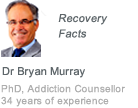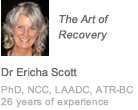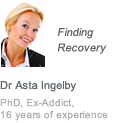Pethidine Addiction
Pethidine addiction strikes apparently at random – nobody takes a painkiller with the intention of getting hooked; they take or are given medication purely for the relief of pain. Unfortunately though, there are people who become victims of the powerful agents at work in many types of painkillers and other medications. Pethidine is one kind of painkiller that has taken many individuals down the path of addiction.
What is Pethidine addiction?
Pethidine is commonly sold as Demerol and is often prescribed by doctors for moderate to severe pain. At first pethidine was considered to be milder than morphine and to be habit forming or addictive as morphine was known to be. This turned out to be wrong and Pethidine is a strong drug that gives its user short term temporary euphoric highs along with pain relief.
Pethidine addiction is actually quite common as millions of people suffer with painkiller addictions each year. There has been a rise in the number of people that have become addicted to Pethidine since 2000. The addiction has caused many people to resort to stealing the drug and physician’s pads in order to feed their habit. Pethidine addiction affects all segments of the population and can cause an individual to spiral out of control if it remains untreated.
Effects of Pethidine addiction
In order to be aware of what to look for, it is important to understand the effects of Pethidine addiction which can take a regularly stable individual and alter their physical, mental, and emotional state to such a degree that they resort to atypical and aberrant behavior. The major side effects of Pethidine addiction include:
- Mood swings
- Difficulty breathing
- Drowsiness
- Chest pain
- Vision problems
- Headaches
- Fainting
- Dizziness
- Tremors
- Low blood pressure
The euphoric high from a dose of Pethidine is very short lived, and it is the chemically-induced high that the addict seeks, not just pain-relief. The high is so transient addicts take more and greater doses to maintain their high. The body adjusts to the presence of Pethidine and compensates for it so that a resistance to the drug quickly forms – so abusers increase their dose, the body re-compensates and the need for more is firmly established as a pattern. The risks of long term complications from taking large and frequent amounts of Pethidine increase exponentially.
Treating Pethidine addiction holistically
There are lots of good people that have fallen prey to Pethidine addiction; they are by no means criminal deviants. They just need to receive professional help to overcome their addiction. The best approach to treating this addiction is a holistic. Users need an experienced licensed professional and support team that is equipped to treat the physical, mental, and emotional state, not just deal with the symptoms of addiction and withdrawal.
Physically, long term Pethidine users will suffer from withdrawal symptoms. Withdrawal symptoms can bring lots of pain, nausea, and other adverse reactions. Users often have to be slowly weaned off their addiction so that their body does not go into deep shock.
While addressing the physical well being of the individual is important, it is just one level of a holistic treatment approach. Users have to be prepared mentally and emotionally to deal with their addiction. They need to develop new ways to effectively deal with pain. It is important that they learn pain management techniques so they can deal with many of the pressures of everyday life without turning to drugs. Drug addiction is often a sign of deep emotional distress, of real emotional pain and trauma. Addicts need to uncover and face the root of these experiences so that they can learn, deal with the issues, and move on. They need to understand and develop other coping strategies in order to avoid relapse into addiction.
Recovering from Pethidine addiction
Recovering from Pethidine addiction is a long term process. It works in stages, some over-lapping, some clear-cut and put behind the addict as they are dealt with. But no matter what the addiction, the same basic steps have to be taken before recovery can even begin.
- First, and perhaps the hardest step to take as well, is for an addict to accept and face
the fact of their addiction. - Next comes understanding and recognizing that they are going to need help to get through,
and of course deciding what sort of help they need. - Now selecting the best type of treatment program, in the most suitable environment is
the task. Making these sort of decisions are not simple for anyone, and discussion with family and medical professionals might be useful. - Once detox has been achieved, and a rehab program is starting to work it does not stop there. Continued therapies and community support along with an initial return to outside life need to be planned and arranged.
As new strategies and coping mechanisms learned in rehab are kicking in and an addict is beginning to build a new life there are bound to be setbacks. These can be minor, or a relapse could happen. But that does not mean recovery is over, or has failed – it just means taking a few steps backward and starting again.
There are a number of quality recovery programs and in patient treatment centers that do an outstanding job treating Pethidine addiction. So maybe it is time to start looking for the help that is waiting for you out there?












